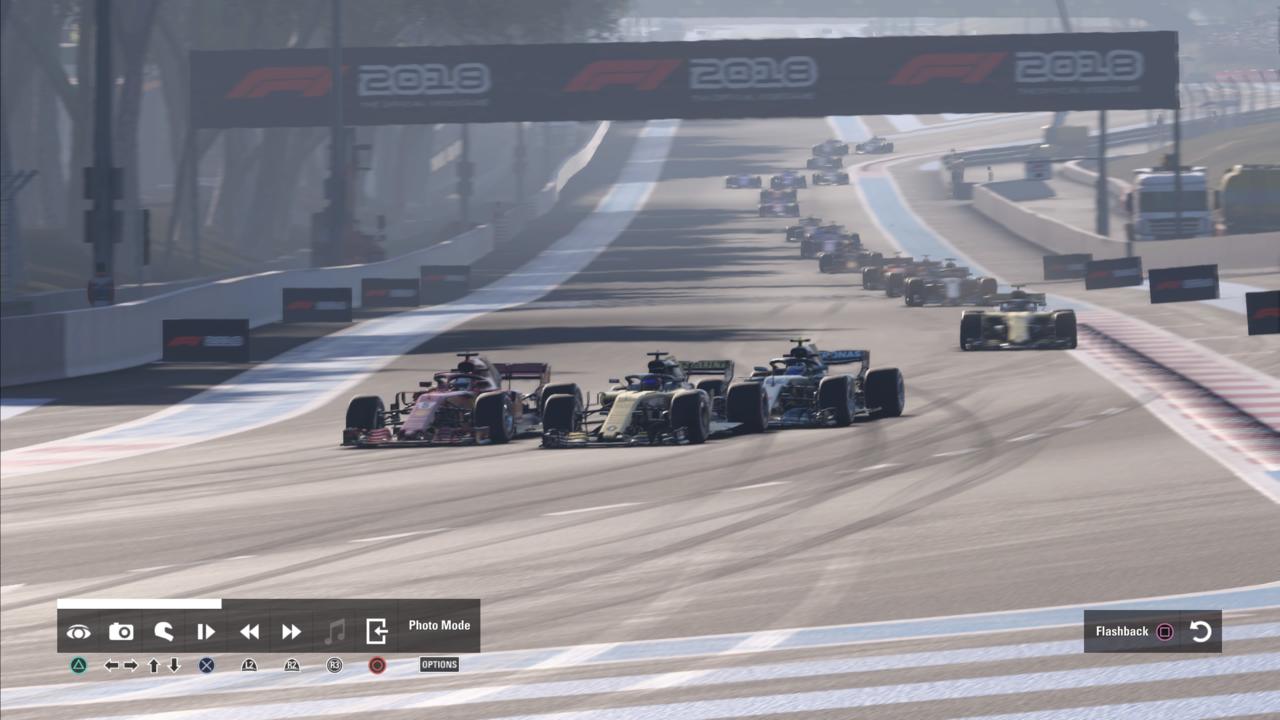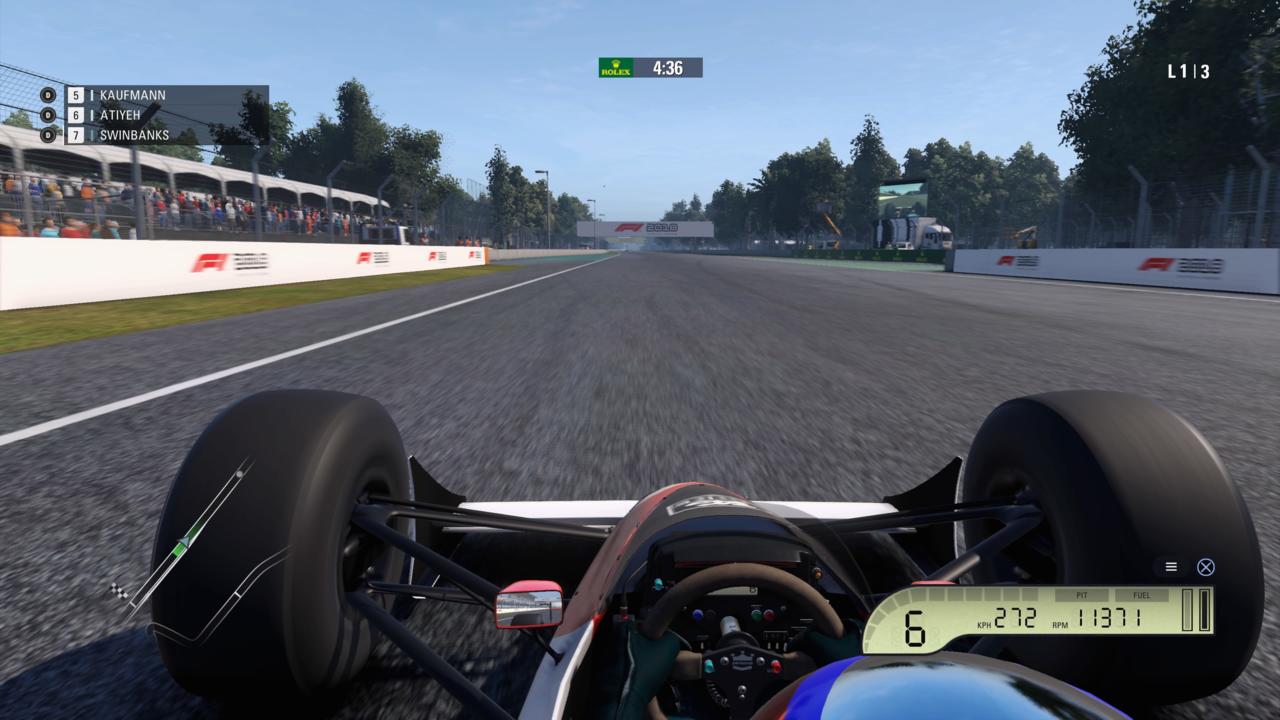Despite the cars being the quickest they’ve ever been in the sport’s history, Formula One in 2018 is about much more than pure speed. Impressively, the technical nature of driving the fastest, most advanced cars on the planet is something Codemasters goes to great lengths to portray in F1 2018, and the experience is all the better for it. Behind the wheel, an updated, more intricate tire model and the new Energy Recovery System controls push the game closer to a realistic simulation than the series has ever been before. This shift complements some smart changes to career mode around upgrades and media interaction that expand and broaden the game’s appeal beyond a single season.
F1 2018 returns to the starting grid with a huge number of different game modes. Take control of your favorite driver in a single Grand Prix weekend, or lead them to the title in one of numerous championship events across varying disciplines. If racing against other players is more your thing, F1 2018 includes both ranked and unranked multiplayer lobbies, along with a full, 21-race online multiplayer championship that can be raced with strangers or friends alike. But where F1 2018 shines brightest is in its Career mode, which sees you assume the role of a custom-created rookie who’s new to the F1 paddock, freshly signed to a team of your choice.
Who you sign with will dictate the performance expectations laid out in your contract for the coming season. Sign with a first-class team like Mercedes or Ferrari and you’ll receive a car that’s both capable–and expected–to challenge for wins every race weekend. Sign with a lesser team like Williams or Toro Rosso and you’ll need to adjust your expectations to something more realistic to their performance level, and help the team move up the order through building performance upgrades to improve your chances.











New performance parts come quickly in F1 2018 with the upgrade system having been overhauled to give you more resource points for completing team goals. A steady flow of good performances now mean you can afford to bring multiple upgrades to subsequent races, giving you a noticeably better performing car, and a greater shot at a better finish in future events. The faster flow of upgrades feels far more rewarding than the slow trickle of past games, letting you make tangible gains on the opposition over a season. To keep things interesting in the long run, regulation changes at the end of the year can completely wipe out an upgrade tree, resetting the grid order in the process, making it possible for new teams to rise to the top, and the current dominant teams fall to the midfield.
Each team has a unique upgrade path for each of the four performance departments, and each can be directly influenced by your interactions with the media, who will hound you occasionally after a session with questions on your performance. Keeping your team morale high will keep upgrade costs down along with decreasing the chances of parts failing during development, while saying the wrong thing and upsetting them will have the opposite effect. Although answering the same questions regularly gets tiresome fast, the resulting morale changes to your team make the hassle worth it.
Performing above expectations puts you in a stronger position for contract negotiations, which thanks to the changes to the upgrade system, feels like a more relevant and rewarding process than before. A high driver value gives you more room to push for a deal that will generate more resource points, including the new addition of contract perks, which can grant strong bonuses from extra resource points for upgrades up to faster pit stops.
The only disappointment remains the muted damage system, once a marquee feature of Codemaster’s titles, once again looking like it’s been unchanged since the series‘ early days.
Eight new classic cars join the twelve from last year’s F1 game, representing a gorgeous range of vehicles from the sport’s history in addition to the monstrous beasts of the 2018 season. All of the game’s cars look impeccably recreated; the meticulous detailing of the winglets and carbon fiber on the modern cars being a highlight, despite the much-maligned ‘halo’ surrounding the cockpit. Each of the game’s 21 locations has been given a lick of paint, too, and look gorgeous whether under lights, baking sun or a heavy downpour. Joining the calendar for the first time is the new Circuit Paul Ricard in France, a labyrinthian maze of tarmac and colored lines with a slightly confusing layout, and the return of the mighty Hockenheimring in Germany, a personal favorite. The only disappointment remains the muted damage system, once a marquee feature of Codemaster’s titles, once again looking like it’s been unchanged since the series‘ early days.
The difference in driving feel between the modern and classic cars is huge; where the modern cars demand a certain finesse with the controls to get the most speed, the older cars let you slide around and wrestle with the wheel a lot more. But the real enjoyment comes from driving the 2018 hybrids, with their unbelievable power and grip being bolstered by two new simulation elements in the form of the ERS deployment controls and the new tire carcass temperature model.











While both sound minor on paper, they make an incredible addition to the element of strategy through a race. The ERS system controls the amount of power deployed from the car’s hybrid battery, giving you six different settings to play with, from zero to full deployment. You can change it on the fly to attack the car in front or defend a move from behind, adding an extra tactical element at your fingertips. It can be overwhelming to manage initially, requiring a little thumb dancing on the control pad–it’s much easier with a wheel. Although if that all sounds too much for you, it can be fully automated so you don’t have to worry about changing it while trying to focus on driving.
The tire carcass temperature model is more complex and is the series‘ biggest step into simulation territory yet, measuring both the surface and inside temperatures of a tire to give a more accurate simulation of how it should wear while you drive on it. If you drive them too hard, or use the wrong compound in the wrong conditions, the tire will overheat and you’ll have to slow down to bring them back into their working temperature range. It puts a stronger emphasis on managing your tires through different driving styles, especially in the longer races, and the way overdriving the tires has an adverse effect on car handling and grip is superb.
The simulation-like additions to the driving model bring you closer than ever to the feeling of sitting on the grid with 1000+ horsepower at your feet.
The racing AI feel more aggressive than ever in F1 2018, and it makes for a noticeably more intense racing experience. Drivers not only defend the inside line into a corner, they will generally make more of a nuisance of themselves when trying to overtake you, rarely conceding a corner unless you’ve managed to put them in a bad position. Multiplayer has been revamped to include a new safety rating, which measures how cleanly you race in ranked lobbies, and a skill rank to matchmake you with other racers of like skill level. However, due to the pre-release nature of the build, we have yet to test the robustness of these rankings.
F1 2018 is brilliant, and the most complete Formula One game to date. The changes to career mode make it the strongest and most appealing it’s ever been thanks to the revamped upgrade system, while the simulation-like additions to the driving model bring you closer than ever to the feeling of sitting on the grid with 1000+ horsepower at your feet, without overwhelming those who just want to jump in and drive.
Update: After spending several hours online with F1 2018, in both ranked and unranked modes, the use of the new ranking system shows a marked difference in the quality of racing. Unranked is a wild west of private lobbies and created sessions, and the class of competition can vary wildly. Ranked adds greater accountability with its use of skill and safety ratings, the incentive being that racing cleanly will reward you by matchmaking with other clean racers of a similar skill level. While you’ll still have to dodge the odd non-braker in ranked races, they’re an order of magnitude cleaner than the unranked races, which can quickly descend into farce from the second the starting lights go out. — James Swinbanks, Aug. 27, 2018, 8:20 AM PT
Website: LINK


